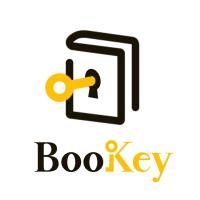Letzte Episode
Unlocking Creativity and Achieving Success: Navigating the Path of Least Resistance – A Revolutionary Guide by Robert Fritz
4. März 2024
Nächste EpisodeChapter 1:Summary of Full Book The Path of Least Resistance
The Path of Least Resistance by Robert Fritz is a book about creativity and how to achieve one's desired outcomes in life. Fritz introduces the concept of structural tension, which is the gap between a person's current reality and their desired reality. He argues that this tension is what drives creativity and innovation.
Fritz explains that traditional problem-solving approaches often focus on eliminating the negative aspects of a situation, but this approach does not lead to lasting solutions. Instead, he suggests that individuals should focus on creating something new that aligns with their desired reality.
The book outlines several key principles for achieving desired outcomes. One of these principles is to clarify one's vision and set clear goals. Fritz emphasizes the importance of having a clear picture of what one wants to achieve and continuously refining this vision.
Another important principle is to embrace the idea of creative tension. Fritz explains that creative tension is the fuel for change and growth, and individuals should embrace it rather than avoid it. He encourages readers to view obstacles and challenges as opportunities for creativity and innovation.
Fritz also emphasizes the importance of taking action and making small incremental changes to move closer to one's desired outcomes. He argues that action is essential for progress and that waiting for the perfect moment or conditions will only lead to stagnation.
Throughout the book, Fritz provides practical examples and exercises to help readers apply the concepts discussed. He also shares anecdotes and stories from his own experiences as a musician and filmmaker to illustrate his points.
Overall, The Path of Least Resistance is a book that challenges traditional problem-solving approaches and offers a new perspective on creativity and achieving desired outcomes. It provides practical guidance on how to harness creative tension and take action to shape one's own reality.
Chapter 2:the meaning of Full Book The Path of Least Resistance
The book "The Path of Least Resistance" by Robert Fritz explores the concept of creative and intentional living. It offers insights into how individuals can overcome mental and emotional barriers to achieve their goals and embrace a more fulfilling life.
The central idea in the book revolves around understanding the patterns and structures that shape our lives and how they can be changed to create desired outcomes. Fritz argues that people often fall into a reactive approach, where they simply respond to the circumstances around them instead of actively designing and shaping their own lives. This reactive approach limits their true potential and prevents them from experiencing a sense of purpose and fulfillment.
Fritz introduces the concept of "structural tension," suggesting that all meaningful goals and desires have an inherent tension between the current reality and the desired outcome. By recognizing and embracing this tension, individuals can harness it as a source of motivation and drive to create meaningful change.
The book also delves into the concept of "creative process," emphasizing the importance of embracing uncertainty, experimentation, and continuous learning. Fritz contends that creativity is not just limited to the arts but can be applied to all aspects of life – from personal relationships to business endeavors.
Through various examples, case studies, and exercises, Fritz provides practical tools and techniques to help readers identify and overcome their own internal and external obstacles. He advocates for a shift in mindset from a problem-focused approach to a vision-driven approach, encouraging readers to proactively design their lives and align their actions with their values and aspirations.
Overall, "The Path of Least Resistance" offers a transformative perspective on personal growth, creativity, and goal achievement. It invites readers to break free from conventional thinking patterns and societal expectations, empowering them to navigate obstacles and discover their unique path to success and happiness.
Chapter 3:Full Book The Path of Least Resistance chapters
Chapter 1: The Structure of the Creative Process
In this chapter, Fritz introduces the concept of structural dynamics and how it applies to the creative process. He explains that every system, including individuals and organizations, have a fundamental structure that determines their behavior and outcomes. He also discusses the importance of understanding this structure in order to achieve desired results.
Chapter 2: Creative Blocks
Fritz explores the concept of creative blocks and explains how they can be overcome. He describes the various reasons that people experience creative blocks, such as fear, lack of self-confidence, and negative emotions. He also provides practical tips on how to break through these blocks and tap into one's creative potential.
Chapter 3: Structural Tension
In this chapter, Fritz explains the concept of structural tension, which refers to the gap between one's current reality and desired outcome. He argues that understanding and managing this tension is crucial for achieving creative success. He provides techniques for identifying and harnessing this tension to fuel motivation and drive towards goals.
Chapter 4: The Creative Act
Fritz explores the process of actualizing one's desires through the creative act. He discusses the role of imagination, intention, and action in bringing ideas into reality. He emphasizes the importance of aligning actions with one's desired outcome and the need to overcome internal resistance to change.
Chapter 5: Visions and the Gap
This chapter delves into the concept of visions, which are a person's long-term goals or aspirations. Fritz argues that having a clear vision helps to create a sense of direction and purpose that drives creative action. He also talks about the gap that exists between a vision and current reality, and how it can be used as a source of creative energy.
Chapter 6: Creating the Future
Fritz explains how individuals and organizations can actively create the future they desire by aligning their actions with their visions. He introduces the concept of structural tension management, which involves continuously adjusting actions and strategies to bridge the gap between current reality and desired outcomes. He provides practical strategies for managing tension and staying focused on the creative process.
Chapter 7: The Dynamics of Creativity
In this chapter, Fritz discusses the various factors that influence the creative process. He explains the role of beliefs, values, and mindset in shaping creative outcomes. He also talks about the importance of managing conflicts and leveraging feedback to continually improve and iterate on creative ideas.
Chapter 8: The Evolutionary Approach
Fritz introduces the concept of an evolutionary approach to creativity, which involves continually adapting and evolving one's creative process. He argues that creative individuals and organizations should embrace change and uncertainty, as they provide opportunities for growth and innovation. He provides strategies for fostering an evolutionary mindset and overcoming resistance to change.
Chapter 9: The Power of Context
Fritz explores the role of context in shaping creative outcomes. He explains that the environment, culture, and systems in which one operates can either support or hinder the creative process. He provides insights into creating a conducive context for creativity and collaboration.
Chapter 10: Transforming the Structure
In the final chapter, Fritz discusses how individuals and organizations can transform their fundamental structure to achieve long-lasting creative success. He emphasizes the importance of self-awareness, continuous learning, and intentional change. He provides practical strategies for restructuring one's thinking, beliefs, and actions to align with desired creative outcomes.
Chapter 4: 10 Quotes From Full Book The Path of Least Resistance
- "A goal is not the same as a vision. A goal is a destination or a specific achievement to be obtained. A vision is a context or a worldview. A goal is a route; a vision is the compass."
- "To create something new, we must let go of the old. We must break away from the traditional structures and paradigms that limit our potential."
- "In order to break free from the path of least resistance, we must confront and overcome our fears. We must be willing to take risks and step into the unknown."
- "Resistance is not our enemy; it is merely a sign that we are pushing against our own limits. It is a signal that we are on the right path, challenging ourselves to grow and expand."
- "The path of least resistance is not a path of comfort; it is a path of mediocrity. It is a path that leads to a life of conformity and stagnation."
- "Success is not the absence of failure; it is the ability to learn from failure and use it as a stepping stone towards achieving our goals."
- "Every creation begins with an idea. But an idea alone is not enough; it requires action, persistence, and a deep commitment to bring it into reality. "
- "We cannot create something new by following the same old patterns. We must break free from the limitations of our past and create a new vision for the future."
- "The key to success lies not in working harder, but in working smarter. It is about aligning our actions with our vision and eliminating any obstacles that stand in our way."
- "True creativity is not about conforming to the expectations of others; it is about expressing our unique perspective and bringing something new and original into the world."
- 00:00Kapitel 1
RSS Feed
Spotify
Wähle deinen Podcatcher oder kopiere den Link:
https://meinpodcast.de/bookey-book-summary-and-review/feed

